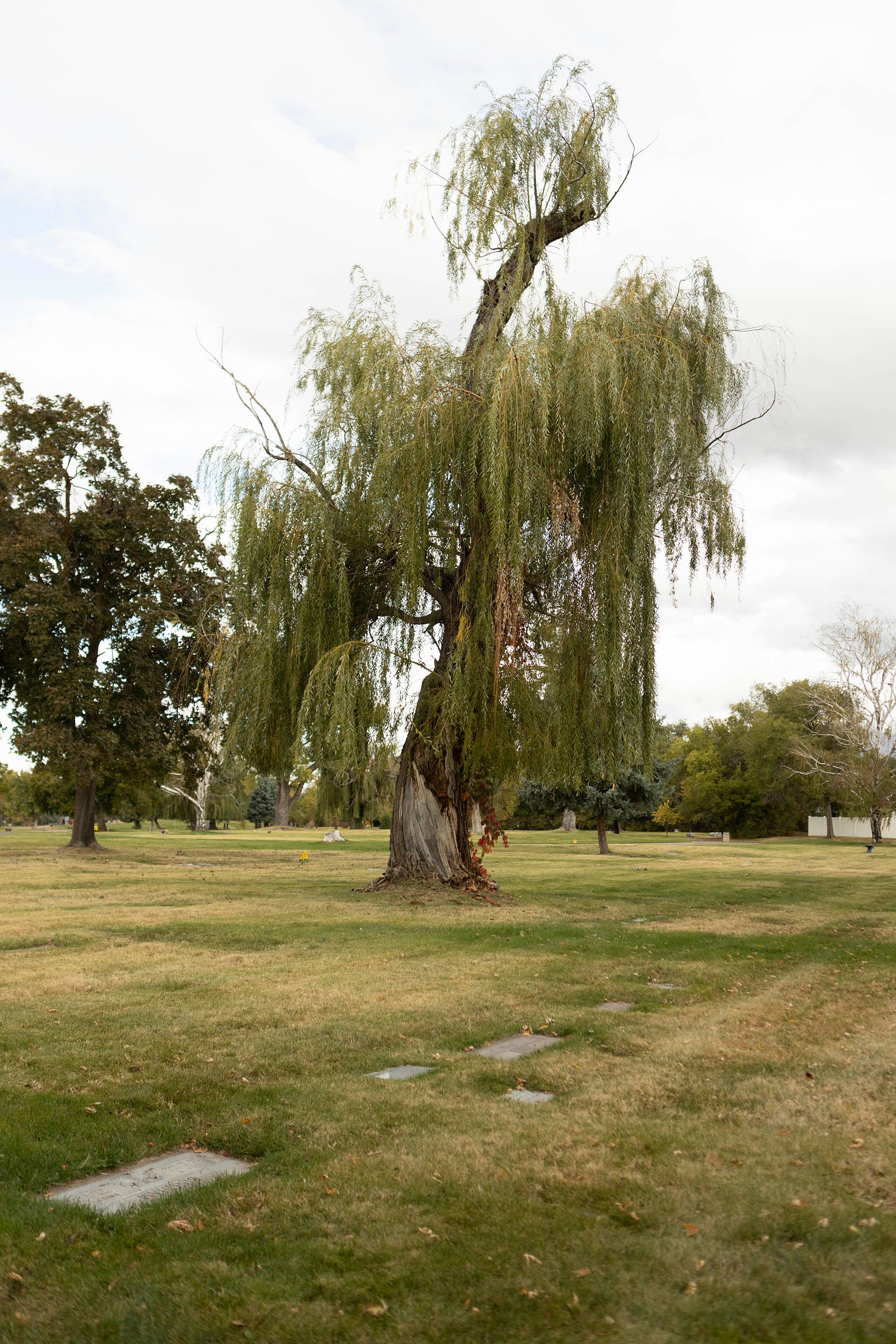Me, Mr. Roger’s & Death
It was like a light switch turned on inside my body and a giant exhale all at the same time. It made sense.
Christmas break between teaching semesters is the kind of time that cultivates these delicious moments. I was laying on my teal couch, candles lit, dogs draped on my lap while reading Caitlin Doughty’s, From Here to Eternity: Traveling the World to Find the Good Death, and had an epiphany about my own photographic work.
The book was gifted at Christmas (thanks Brian!), from a wishlist. It may seem that Advent is an odd time to think death-y thoughts, but my current photo-body of work is on the sacredness of death and how the West is really not great at embracing the reality of death (we’ll see how the project continues to evolve, but that’s my current understanding of the work).
As I devoured read the book, in Doughty’s description of Spain’s death practices she reveals that often there is a literal glass barrier between the deceased and the family in mourning. This separation, she observes, gives a safe way for those unfamiliar or uncomfortable with death an ease of access to it and to their loved one in saying goodbye. She refers to the glass barriers as a type of training wheels for growing in death acceptance.
I paused. This struck a chord in me. As much as I wanted to keep reading I had to stop because a thought wanted to emerge, but I had to be patient with it. So I began journaling about it with candles still lit and puppies still draped.
What emerged as I contemplated the idea of “safe access” and the concept of glass was how my photo-based work functions in a quite similar way. My photography is often training wheels for people to enter the difficult but necessary questions it raises. And when it’s displayed behind glass, in a gallery setting, it becomes a safe way to look and be curious.
My photo work frequently asks questions around aging and beauty, estrangement, desire and autonomy, and now death. As I continued to process, one of my favorite (or least favorite depending on where I am in the process of it) mottos is: the only way out is through. I share this with my students often. Groans or sometimes sighs of relief follow.
My second favorite motto is: we cannot change what we won’t acknowledge. My History of Photography students in particular hear this one all semester. It helps them connect with the idea that photography is a way of seeing. And that once we see, we are responsible to respond — and that is how photography will change the world (Azoulay, The Civil Contract of Photography).
This morning it occurred to me that these ideas are a subtle remix of Mr. Rogers’ motto: if it’s mentionable it’s manageable. Mr. Rogers was an expert at making hard things accessible and digestible as he led his viewers through the hard things he sometimes discussed on his television show. He didn’t hide from things like death in his Neighborhood. He helped his predominantly young viewers acknowledge the feelings that often come around such difficult experiences. He gently helped them (and me) acknowledge the painful thing, and then helped them (and me) emotionally move through it.
Occasionally I get asked why I work in such challenging themes. Doughty’s book gave me new language to my answer: to offer people a safe viewing distance from important things that need their attention. I want my photo work to companion people into necessary but complicated waters. I desire that the “neighborhood” I’m building through all of my work is a safe space to feel and to process and to ask hard questions for others as it is for me. I hope it is also a space to be and become more integrated, wise, and empathetic people. Because we will not be changed until we look, we must learn to look and move through life’s longings and losses together.


